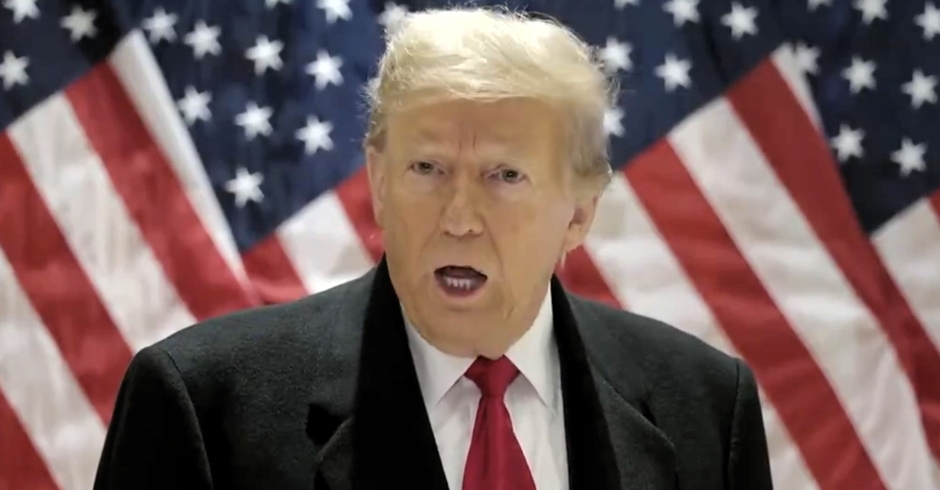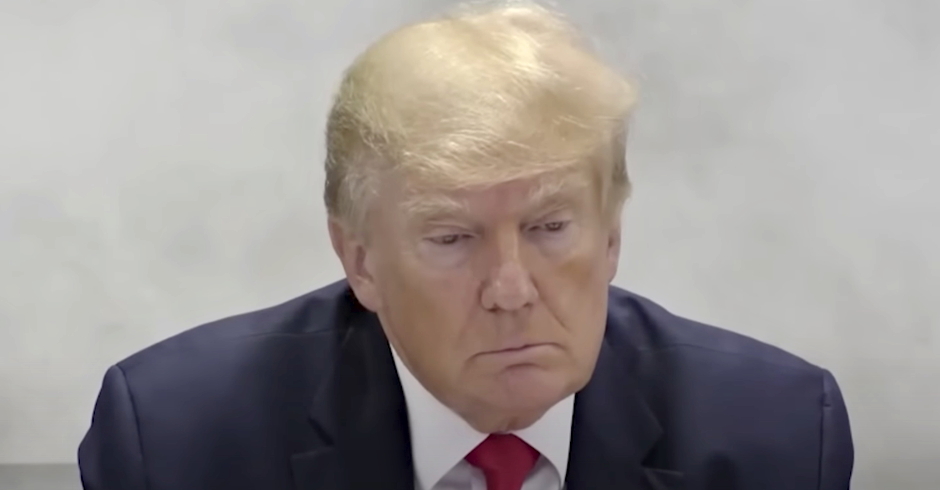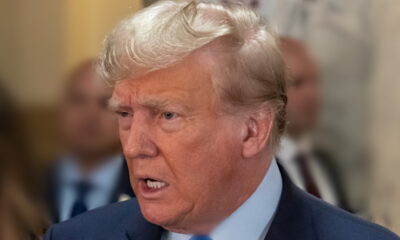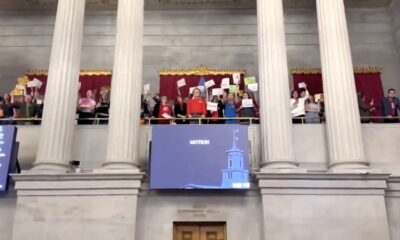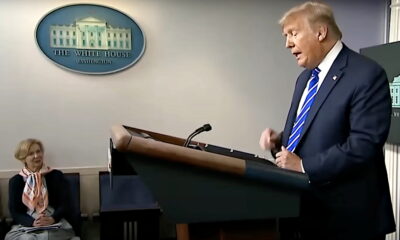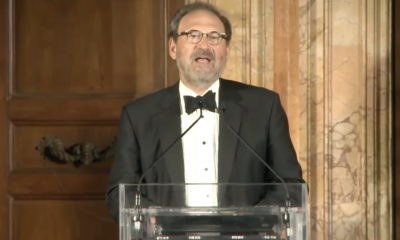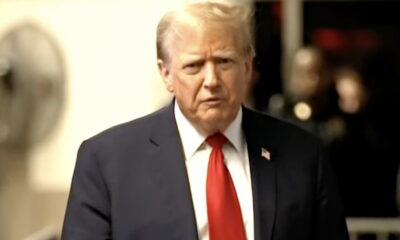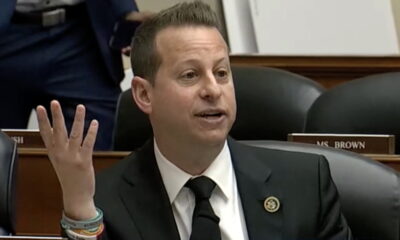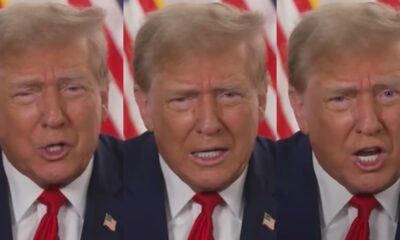Sacrilege Or Censorship? Christians Enraged by Art with Gay, Religious Images

Minor White (American, 1908–1976). Tom Murphy, 1948. Gelatin silver print, 4 5/8 x 3 5/8 in. (11.7 x 9.2 cm). The Minor White Archive, Princeton University Art Museum. Bequest of Minor White, MWA 48-136. © Trustees of Princeton University Photo courtesy Tacoma Art Museum
On November 18, HIDE/SEEK: Difference and Desire in American Portraiture will open to the public at the Brooklyn Museum (BM). After it closes on February 12, the exhibition will travel to the Tacoma Art Museum (TAM) where it can be viewed from March 17 through June 10, 2012.
It wasn’t until the controversy surrounding it went viral more than a month after it opened, that I first heard about HIDE/SEEK , then showing at the National Portrait Gallery (NPG). I considered traveling to Washington, D.C. to see it, but the holidays were coming; a blizzard was predicted for D.C. and I was familiar with the work of many of the artists. When I owned a gallery, I had even shown some of the same pictures being exhibited at the NPG. And I had experienced the same issues as Jonathan Katz and co-curator David Ward when they were assembling the show.
Like them, I had been refused loans of art, often by closeted gay curators who were afraid of drawing attention to themselves. In fact my gallery, In a Plain Brown Wrapper, which I opened in Chicago less than a decade after Stonewall, had been visited by police in 1980 and threatened with closure when I held the first Robert Mapplethorpe exhibition outside of New York and San Francisco.
This was not the first time that an exhibition that included LGBT or religious imagery had been censored and undoubtedly not the last. So thinking I had been there, done that, I decided to stay home with my partner in more temperate Seattle.
But I changed my mind over a post-Christmas brunch with our neighbors down the street. Pamm had given Pam a copy of the splendid catalogue, a stunning coffee-table size book which included images I had never seen before. Wow! After flipping through its pages, really just a quick perusal, I was ready
to pack my bag. And I’m really glad I decided to make the trip.
It was only after I had booked my flight that I learned my stay coincided with an organized protest by Art Positive at the annual meeting of The Smithsonian’s Board of Directors.
Â
In case you missed the uproar, I’ll explain. A four minute excerpt from the film A Fire in My Belly by David Wojnarowicz was on display when this landmark show first opened on October 30, 2010. It was removed December 1.
As Holland Cotter reported, NYT, 12-10-2010 this was not the first time Wojnarowicz’s work had created a stir. “In 1989, Donald Wildmon, founder of the American Family Association, mailed a pamphlet reproducing details from collages by the New York artist David Wojnarowicz (1954-1992) to every member of Congress, to various news media outlets and to religious leaders across the country. Mr. Wildmon, a Methodist minister, had prepared the pamphlet himself; he considered the images pornographic or blasphemous. He had copied them from the catalog for an exhibition partly supported by the National Endowment for the Arts, the real object of his protest. Wojnarowicz (pronounced voy-nah-ROH-vitch), furious at having his work selectively edited, sued Mr. Wildmon for misrepresenting his art and won the case.”
Â

A Fire In My Belly (still), 1986-87. Super 8mm film, black and white and color. Silent. Courtesy of The Estate of David Wojnarowicz and P.P.O.W Gallery, New York and The Fales Library and Special Collections/New York University
Twenty-one years later history repeated itself. Bill Donohue, president of the Catholic League, one of the icons of the Religious Right, took offence at an excerpt from A Fire in My Belly which included an image of ants crawling over a crucifix and Republican leaders John Boehner and Eric Cantor suggested the entire exhibit be canceled and threatened the federal funding of the Gallery unless the Smithsonian pulled the Wojnarowicz piece. Feeling pressured, G. Wayne Clough, the director of the gallery unilaterally removed the video excerpt of the film, a commentary on AIDS and spirituality.
The Smithsonian was petitioned to restore the video to the exhibit  and the film was projected on the side of the building, but it wasn’t until Mike Blasenstein and Michael Dax Iacovone brought the film back into the NPG that the story of its removal and copies of the video went viral; the ensuing kerfuffle prompted institutions worldwide to protest the censorship and show the video.
Blasenstein strapped an iPad around his neck and stood in the gallery with the video playing on the screen. He offered flyers about the Smithsonian’s censorship to visitors. In less than 10 minutes security guards removed him from the exhibit and he and Iacovone, who filmed the encounter, were barred for life from returning to any of the Smithsonian museums. Prohibited from displaying the film inside, Blasenstein and Iacovone parked a trailer around the corner, called it the Museum of Censored Art and showed the film for the duration of the exhibition.
Last April when I learned the Brooklyn and Tacoma Art Museums were exploring the feasibility of re-mounting Hide/Seek, I asked Lisa McKeown, the Communications Coordinator, at the Tacoma Art Museum if any objections had been made to mounting the exhibition. She responded, “Just to clarify… There hasn’t been an organized movement that we’ve had to deal with (yet) as far as people objecting to bringing the exhibition to Tacoma. We have received some letters, emails, and phone calls from individuals who do not want us to bring the exhibition, for various reasons. On the flip side… we have had many more letters and emails in support of our bringing the exhibition here.â€
And in May, when I began a letter-writing campaign to lend the two museums additional support for mounting the exhibition, Charles Desmarais, then Deputy Director for Art at the Brooklyn Museum responded that unlike the NPG or TAM, “we have received nothing but support and encouragement.â€
Not anymore! An article in yesterday’s New York Daily News was headlined, “Another unholy controversy at Brooklyn museum: Video of ants skittering over crucified Jesus is enraging Christians.”
Erin Durkin, Mark Morales and Katie Nelson wrote, “An avant-garde video of ants skittering over the crucified Jesus is enraging Christians who say an upcoming Brooklyn Museum art exhibit is sacrilegious. ‘Ants were crawling on the image of the crucified Christ,’ said Msgr. Kieran Harrington, a spokesman for the Catholic Diocese of Brooklyn, which sent a letter asking for the video to get yanked from the exhibit. ‘Certainly we don’t think this would be tolerated if this was the image of the Prophet Muhammed [sic] or any other religious symbol.’ ‘What is the point?’’ said Pastor A. R. Bernard, who leads Brooklyn’s Christian Cultural Center. ‘I think this is the piece in the Hide/seek collection they really need to hide.’
It’s far from the first time the art museum has stirred the pot: The museum drew ire from then-Mayor Rudy Giuliani in 1999 for an exhibit featuring a painting of the Virgin Mary decorated with elephant dung and images of female genitalia.
Giuliani tried to cut the museums funding because of the painting, part of a provocative exhibit called Sensation.  Giuliani and Catholic advocates also slammed the museum for featuring [Renee Cox’s “] Yo Mamas Last Supper†which depicts Christ as a nude woman in 2001. “A Fire in My Belly†is creating a similar stir. But Brooklyn Museum Director Arnold Lehman defended the entire exhibit. ‘For a city that prides itself on diversity and creativity, there couldn’t be a better exhibition,’ Lehman told the Daily News.â€
There are more than a hundred good reasons to travel to Brooklyn this winter or to Tacoma
this spring; viewing the 10 second segment of
 a 4 minute excerpt from the 30 minute A Fire in My
Belly is only one of them.
The website of the Brooklyn Museum, puts the exhibition in perspective. “Hide/Seek is the first major museum exhibition to focus on themes of gender and sexuality in modern American portraiture bringing together “more than one hundred works in a wide range of media, including paintings, photographs, works on paper, film, and installation art. The exhibition charts the underdocumented role that sexual identity has played in the making of modern art, and highlights the contributions of gay and lesbian artists to American art. Beginning in the late nineteenth century with Thomas Eakins’ Realist paintings, HIDE/SEEK traces the often coded narrative of sexual desire in art produced throughout the early modern period and up to the present. The exhibition features pieces by canonical figures in American art—including George Bellows, Marsden Hartley, Alice Neel, and
Berenice Abbott—along with works that openly assert gay and lesbian subjects in modern and contemporary art, by artists such as Jess Collins and Tee Corinne.”
Â
Â
“In addition to revealing connections between sexual identity and formal developments in modern art, HIDE/SEEK presents artists’ responses to the Stonewall Riots of 1969, the AIDS epidemic, and postmodern themes of identity, highlighted with major pieces by artists such as AA Bronson, Félix González-Torres, and Annie Leibovitz.â€
Yes, there are more than a hundred good reasons to go to Brooklyn between November 18 and February 12. And if you manage to get there before January 29 you can also catch the exhibition, Youth and Beauty: Art of the American Twenties  which includes this splendid painting of gay icon, Paul Cadmus.
Â

Luigi Lucioni (American, 1900–1988). Paul Cadmus, 1928. Oil on canvas, 16 x 12 1/8 in. (40.6 x 30.8 cm). Brooklyn Museum, Dick S. Ramsay Fund, 2007.28 Photo courtesy Brooklyn Museum
Another not-to-be-missed exhibition, Seeing Gertrude Stein: Five Stories is presently at the NPG, through January 22, 2012. It was originally shown at San Francisco’s Contemporary Jewish Museum where ironically a lesbian couple was asked to leave the exhibition because they were holding hands.
Â
From the day they met, September 8, 1907, Stein and Toklas lived as an openly Lesbian couple. Seeing Gertrude Stein: Five Stories features more than 25 artifacts and 100 works by artists from across Europe and the U.S., detailing Stein’s life and work as an artist, collector and distinctive style-maker.  The NPG website informs us that the exhibition “shares an in-depth portrait of Stein that knits together her many identities: literary celebrity; life-long partner of Alice B. Toklas; arts networker whose famous friendships included some of the most prominent artists of her time (Picasso, Matisse, Braque, Hemingway); Jewish-American expatriate; and muse to artists of several generations. Stein is considered by many to be an inventor of Modernism whose reach across the arts was extraordinary. She wrote novels, poems, essays, literary and art theory, opera libretti, ballets, memoirs and children’s books and was also an arts networker, bringing creative people together in legendary salons and gatherings in her homes. Her originality as a thinker, along with her interdisciplinary approach to projects in dance, music and theater, continue to inspire artists today.â€
Despite today’s political climate with its resurgence of intolerance and incivility; the directors and curators in Brooklyn and Tacoma have defied attempts at censorship and instead defended freedom of expression. At a time when funding for the arts is problematical at best they have risked the disapprobation of patrons, donors and politicians. These institutions deserve our support – the easiest and best way to demonstrate it is to simply go see these shows.
You won’t regret the time you take or the effort you make to journey to these museums. Each of these exhibitions offers the opportunity to understand the human experience from an historical LGBT perspective. The pictures are as moving and as relevant today as when they were first made.
And if you want to try your hand at a little subversive activism while you are enjoying the art, how about holding hands with a person of the same sex as you stroll through the museum?

Stuart Wilber. Photo by Mathew Ryan Williams
Â
Stuart Wilber believes that living life openly as a Gay, Lesbian, Bisexual, Transgender or Allied person is the most powerful kind of activism. Shortly after meeting his partner in Chicago in 1977, he opened a gallery named In a Plain Brown Wrapper, where he exhibited cutting edge work by leading artists; art that dealt with sexuality and gender identification. In the late 1980’s when they moved to San Clemente, CA in Orange County, life as an openly gay couple became a political act. They moved to Seattle 16 years ago and married in Canada a few weeks after British Columbia legalized same-sex marriage. Although legally married in some countries, they are only considered domestic partners in Washington State. Â Equality continues to elude him.

Enjoy this piece?
… then let us make a small request. The New Civil Rights Movement depends on readers like you to meet our ongoing expenses and continue producing quality progressive journalism. Three Silicon Valley giants consume 70 percent of all online advertising dollars, so we need your help to continue doing what we do.
NCRM is independent. You won’t find mainstream media bias here. From unflinching coverage of religious extremism, to spotlighting efforts to roll back our rights, NCRM continues to speak truth to power. America needs independent voices like NCRM to be sure no one is forgotten.
Every reader contribution, whatever the amount, makes a tremendous difference. Help ensure NCRM remains independent long into the future. Support progressive journalism with a one-time contribution to NCRM, or click here to become a subscriber. Thank you. Click here to donate by check.
 |




